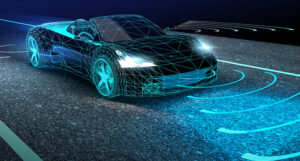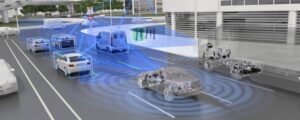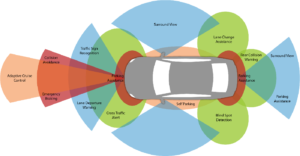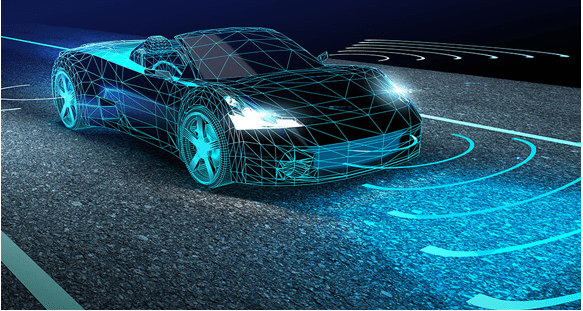What do we mean by ADAS ?
ADAS means Advanced Driver Assistance Systems. Its role is to prevent deaths and injuries by preventing car accidents as most of the vehicle accidents are caused by human mistakes, so it can help in reducing the car and can control the serious impacts that cannot be normally avoided.
There are many applications of ADAS and we will be discussing them as we move forward. Some of them are :
- Lane departure warning.
- Traffic sign recognition.
- Pedestrian detection.
- Bind spot detection.
- Automatic emergency braking.
These are some of the real world applications that make ADAS successful. Now, let us discuss how this system works.

Also do check the Image and video annotation to know more .
How does ADAS work in real life ?
Automobile industry is booming with new technologies coming every year. This sector is now moving in the autonomous field where all the cars would have the autodrive feature.
There are a number of chips called SoCs ( systems on a chip ). The SoCs chips connect the sensors to actuators with the help of interfaces and high performance electronic controller units, ( ECUs ).
The autonomous self-driving cars use a variety of these types of applications to gain full 360 – degree support. Hardware designs use advanced process nodes so as to meet the high performance requirements while also reducing the demands for power and footprint.

Applications of ADAS :
Some important and most common examples of ADAS are :
- Adaptive cruise control : ACC or adaptive cruise control is very helpful while driving on highway. On a highway drivers find it difficult to monitor their speed and also other cars for a long time and so ACC can automatically accelerate, slow down, and also stop the vehicle in case of collision.
- Adaptive light control : ALC or adaptive light control works to adapt the vehicle’s headlights to the external conditions. It is able to control the direction, rotation, strength, of the headlights according to the vehicle’s environment as well as darkness.
- Glare – Free High Beam & pixel Light : They use sensors to adjust darkness and surroundings of the vehicle without even noticing and disturbing the traffic. It detects lights of other vehicles and redirects vehicle’s lights away so as to prevent others from becoming temporarily blinded from the vehicle’s light.
- Automotive Parking System : It helps the drivers by informing about the blindspots to guide the drivers to turn their steering wheel and when to stop. In this system, the vehicles are equipped with rearview cameras to determine the car’s surroundings.
- Autonomous Valet parking : It is a technology that works with the help of vehicle meshing, 5G network communication, and cloud services that help to manage all the autonomous vehicles in the parking lots. The sensors provide vehicles with all the information like where it is now, and where it needs to reach or about its final destination, and how to drive and reach its destination safely.
- Navigation System : It helps the car with on – screen instructions and also some voice prompts that help drivers to navigate and locate their destination. Advanced navigation systems can also detect traffic and then provide drivers with traffic free routes or with a route which has less traffic. Advanced navigation systems also provide drivers with heads up displays to avoid distractions.
- Night Vision : It is a system that helps drivers to see things clearly at night which would be difficult to see through your normal eyes. There are two types.
- Active Night Vision : They project infrared light.
- Passive Night Vision : It depends on the thermal energy coming from cars, animals, etc.
- Blind Spot Monitoring : It uses sensors to determine and provide the drivers with the important information about the blind spots, which a driver could not determine on its own.
- Crosswind Stabilization : This feature helps cars to counter heavy and strong crosswinds. The sensors detect pressure acting on the vehicle and apply brakes accordingly.
- Driver Drowsiness detection : It monitors and detects drivers of their behaviour while driving. If the driver seems leay then it warns drivers of sleepiness and other road distractions. The system detects by monitoring the driver’s head and heart rate to determine drowsiness.
So, these were some of the real world applications of ADAS. Now let us talk about the future of ADAS.adas
Future Of ADAS :
ADAS has a vast future with increasing need of hardwares and softwares. Its goals are :
- To increase reliability.
- Reduced costs.
- Development cycles become short.
How can ADAS Annotation be used ?
ADAS can be used in the following fields :
- Semantic Image Segmentation : Semantic Segmentation is used to label objects that are appearing more than 1. Each object that is detected is labelled with a different color code without any noise in the background. Annotation process is used to remove and eliminate this background noise.
- Annotation for Facial Analysis : It helps in the field of human face detection and recognition. It annotates 3D face shape models to detect the position of the head, expression of face as well as complex background.
- V2X & 5G : It is the new feature of ADAS with low latency and facilitates communication between the vehicles and pedestrians that are generally referred to as V2X. Millions and millions of cars connect to cellular networks for the sake of real time navigation.
That is how ADAS is important and useful in the future

Now that you have reached this far, I assume that you liked the blog and you have got some value from it. To continue embracing yourself with similar knowledge, just click on the link below:
To read more Blogs related to annotation, Visit https://24x7offshoring.com/blog/
